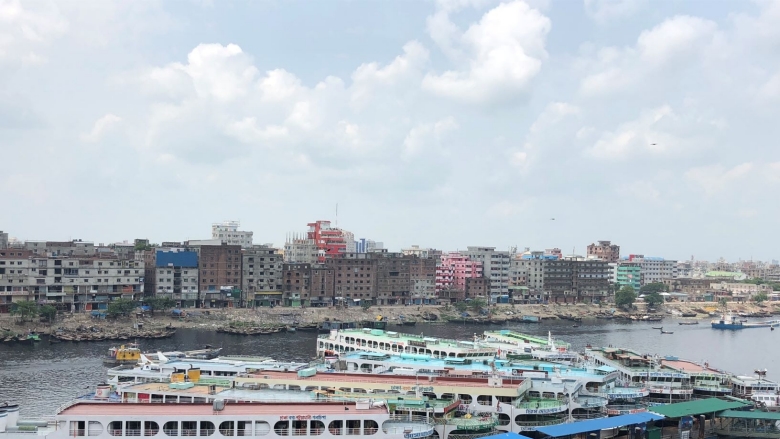Challenge
Despite its importance, the IWT has received little attention in the last few decades with limited resources allocated to its development. It receives only 4-7 percent of total transport sector funding. Current issues faced by the IWT sector include: (a) lack of funding allocated to maintenance of waterways other than ferry crossing routes and consequently inadequate dredging maintenance which fails to address rapid and continuous processes of sedimentation; (b) outdated hydrographic capability and limited data acquisition for river maintenance and other planning purpose; (c) poor navigation aid system and very limited night time aids; (d) poor safety culture, including outdated rules and regulations, concerning the design, licensing, construction, operation and maintenance of IWT vessels, insufficient vessel shelters, and the lack of facilities for searching and rescuing people in distress; and, (e) insufficient and dilapidated river port facilities for general cargo trade and passenger transport. Many terminal facilities consist of no more than wooden planks for embarking and disembarking passengers and especially challenging for mothers with small children, pregnant women, elderly people and the disabled.
Approach
The BRWTP1 will improve and maintain the navigability of inland waterways along the Chittagong-Dhaka-Ashuganj Corridor and connecting routes and support navigation safety improvements. This will help reduce travel time and cost for cargo and passenger transport and boost national and regional trade. The project will build one new general cargo terminal at Pangaon and improve the existing cargo terminal at Ashuganj. It will also build new and rehabilitate existing passenger terminals at Sadarghat, Narayanganj, Chandpur, and Barisal. Further, it will help develop River Information Systems (RIS) and provide and, funding for research and development to enable continuing sector improvement and sustainability. This includes work on sector policies and strategies needed to: improve revenue collection and management; incentivize public and private sector investments especially related to container transport; and, mitigate and improve IWT’s impact on the social and physical environment. The project will help improve the Bangladesh Inland Water Transport Authority’s capacity to comply with international standards and adopt modern management practices for inland water transport and achieve long-term operational and financial sustainability.


